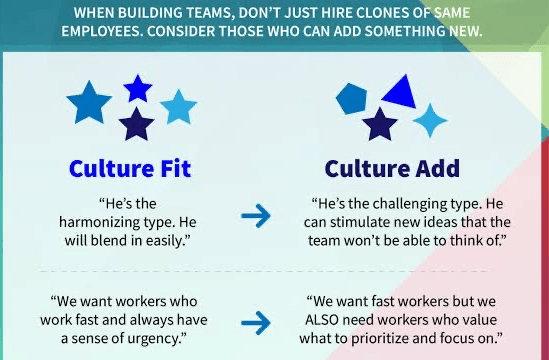Culture Fit - How to Avoid Cloning Your Workforce
You'll have heard the term culture fit banded around for many years, and many companies, irrelevant of their size, invest considerable time and effort into ensuring a cultural fit before making an offer to the candidate. But how do you hire for your company's culture without a similar strain and mindset of people? Whilst companies may want to hire walking examples of their cultural organisation, is this merely encouraging a cookie-cutter mould that can lead to other complications? What can you do to make better hiring decisions?

Firstly, what is cultural fit? It’s a defined set of characteristics or personality traits that make up the culture. In a nutshell, it's the likelihood that the job candidate will confirm and adapt to the company's core values and combined behaviours to create a seamless organisation. There should be all sorts of personalities that could make your company great and not some misguided assumptions and possible lack of diversity because the human resources person has similar values to the candidate they are trying to hire.
When organisations consider new hires, they are looking for people who agree with and fit their agenda. Generally, there are two criteria that human resources departments consider when evaluating candidates: Cultural and functional fit. Functional fit assesses the candidates' technical skills' necessary for the role, such as education, certifications, core competencies, career history and experience. This information is usually gleaned directly from the candidate's curriculum vitae and can be verified pre-interview.
Human centric skills and personal goals are assessed during the interview phase. The interviewer can decide whether or not the candidate will thrive in the company's culture through various open-ended questions or from data taken from personality profile testing. Many human resources professionals might recommend hiring applicants with an excellent cultural fit but lack the necessary technical skills, thinking that these can be trained. In contrast, the lack of cultural fit could lead to job dissatisfaction, excessive absences, poor productivity and a higher turnover rate.
Recruiters should understand that great matches make great hires and don’t ‘just’ fit the culture fit ‘box’. Traditionally, culture fit is thought to be threefold;
Stylistic fit
How an individual builds relationships, communicates and offers or receives feedback.
Skillset fit
An individual's abilities, knowledge and experience to perform a job include research and planning, leadership management and technical skills.
Expectation fit
This identifies how a candidate's aspirations intersect with the company’s to gauge whether or not they are a good match given the job role and the candidate's career objectives.
Setting clear expectations and objectives around company culture and how it's perceived will help candidates understand whether they will be able to reach their true potential. By understanding culture fit, recruiters will likely lower future attrition for an individual applicant. Many human resources believe that there is a more significant opportunity for candidates to change their work style to align with and maintain the company culture. They believe that culture is essential in an organisation where individuals can benefit from the cultural fit.
Thankfully no formula makes people successful; while one company might have an 'A' player or cultural fit, they might be a 'B' player for another firm; meaning that they might not excel in one company but will thrive in another. To have a successful recruit doesn't mean recruiting identical people. If human resources departments don't hire a diverse and effective workforce, this could be harmful to your business. The following delves into some of the pros and cons;
PROS
Saving Money
Every organisation strives to save money, so hiring for an excellent cultural fit should mean that a qualified employee will fit the long-term company culture and help reduce staff turnover, thus reducing recruiting costs.
Workplace Happiness
Employees are more likely to embody and promote company core values to others when they fit in. This helps your company's reputation, increases morale and attracts fresh talent and sparks the curiosity of job seekers looking to feel valued.
CONS
Low Retention
Whilst hiring for cultural fit can save costs, it can have the opposite effect if implemented poorly. In essence, this questions how employees view the company culture. Are those employees such a good fit? They could feel like they have been misled during the hiring process.
Focus on Personality
Often companies focus on personal traits rather than skills and qualifications. Hiring for personality because of similar values can eliminate diversity and lack of balance and create a negative bias toward future hires who fit the mould.
Technology
In this age of technology, it's easy for candidates to research an organisation, understand the company culture and embellish or imitate the values the company seeks during an interview to have a better chance of being hired. Understanding this means finding a balance between cultural fit and a good hire is essential.
Is it time to review your company culture?
- Review the level of diversity and ensure that company culture allows employees to grow.
- Keep up with modern workplace tactics, be open to change, be flexible and ensure the company is appealing.
- Consider blind hiring to increase workplace diversity and attract capable candidates.
- Ask relevant questions during the interview to gauge how a candidate will fit with the company's organisation.
- Ensure the interview process involves multiple interviewers (managers and co-workers) to help eliminate bias.
No matter how compelling your recruitment efforts are, there is never a guarantee that an employee will live up to expectations, even if they are the perfect cultural fit. Perhaps consider a diverse and happy selection of employees motivated to achieve business success and meet company objectives.



